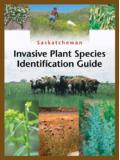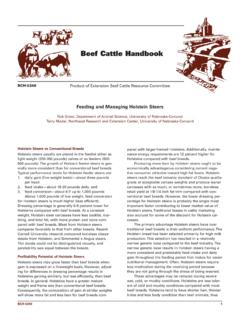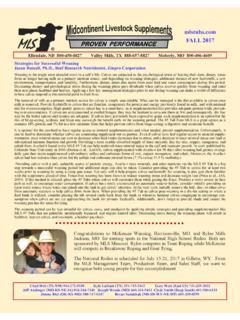Transcription of A Snapshot of the Saskatchewan Forage Market Price Survey ...
1 YrAverageAverage Saskatchewan Hay Yields (tons/acre) 2011-2017 AlfalfaBrome/AlfalfaOther Tame HayGreenfeed Hay yields were visibly below the long-term average for Saskatchewan for the second time in three years. Soil moisture conditions were ideal across Saskatchewan at the start of the growing season. Although the growing season started early, plants were slow to take off and grow. Widespread frost mid May injured forages, setting back yield potentials. A widespread lack of precipitation followed, except for north west parts of the province which experienced fairly moist growing conditions.
2 Average hay yields for crops are displayed below. 2017 Provincial Forage Yields (tons/acre) Crop Dry Land Irrigated Land Alfalfa Hay Brome/Alfalfa Hay Other Tame Hay Wild Hay Greenfeed A Snapshot of the Saskatchewan Forage Market Price Survey September 2017 Haying weather was hot and dry across Saskatchewan . Haying was completed in a decent timeframe with very little rain showers. Hay quality is superb across the province. Greenfeed and straw quality will also be high if it was baled before mid and late September rains.
3 Pests and disease were not a common issue in forages in 2017. Producers should be mindful that pockets of alfalfa weevil infestations are found throughout the province and can cause serious damage to alfalfa crops. Scout fields frequently in June. 2017 Forage Freight Rates ..vary from $ - $11/loaded mile .. mean cost $ mile Average Forage Prices in Saskatchewan from 2013-2017 2017 2016 2015 2014 2013 Forage Type Average Price ($/Tonne) Average Price ($/Tonne) Average Price ($/Tonne) Average Price ($/Tonne) Average Price ($/Tonne) Grass Hay $ $ $94 $82 First Cut Alfalfa $ $ $98 $98 Second Cut Alfalfa $ $ $118 $111 Alfalfa/Grass Mix $ $ $86 $81 Greenfeed $ $ $83 $79 Straw $ $ $44 $46 Yellow Sweet Clover - - - Forage Type Weighted Average Price ($/tonne)
4 Grass Hay $ First Cut Alfalfa $ Second Cut Alfalfa $ Alfalfa/Grass mix $ Greenfeed $ Cereal Straw $ Pulse Straw $ Hay listings are turning into hay sales in 2017. The majority of listings of average priced forages sold in under a week during September, 2017. As fall and winter progresses and producers can see how on-farm supplies are holding up the Price of forages will fluctuate accordingly. 2017 Silage Values Many producers are turning to silage as a viable Forage option. Small Square Hay Bales 2016 - $ 2015 - $ The Saskatchewan Forage Council would like to recognize all of the producers, Forage purchasers, sellers, and transporters, who shared their insight on the Forage Market in September.
5 We truly appreciate your assistance. The full version of the September 2017 Saskatchewan Forage Market Report, including a review of conditions by region, is available at Cereal $ tonne Drought is impacting Forage production and the demand for Forage in a wide band from the Pacific Coast to Hudson Bay and into the Northern United States. Producers impacted are managing by: reducing cow numbers; selling all calves including heifers early in the fall; selling bred heifers instead of retaining them; having cattle custom fed elsewhere; using straw and pellets or grain for feed; purchasing feed at a premium; and/or baling additional greenfeed or straw where possible.
6 2017 - $ Corn $50/wet tonne





